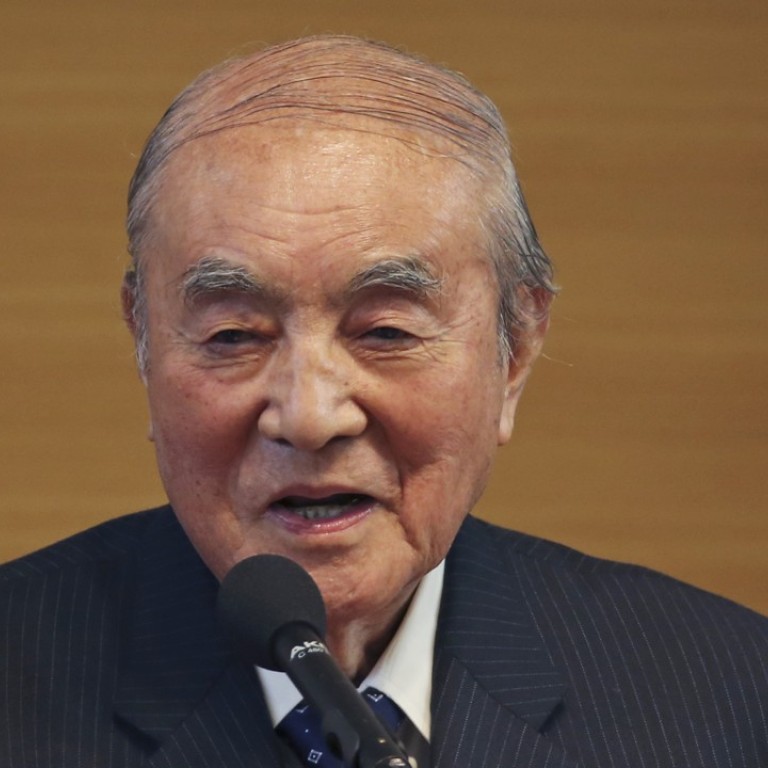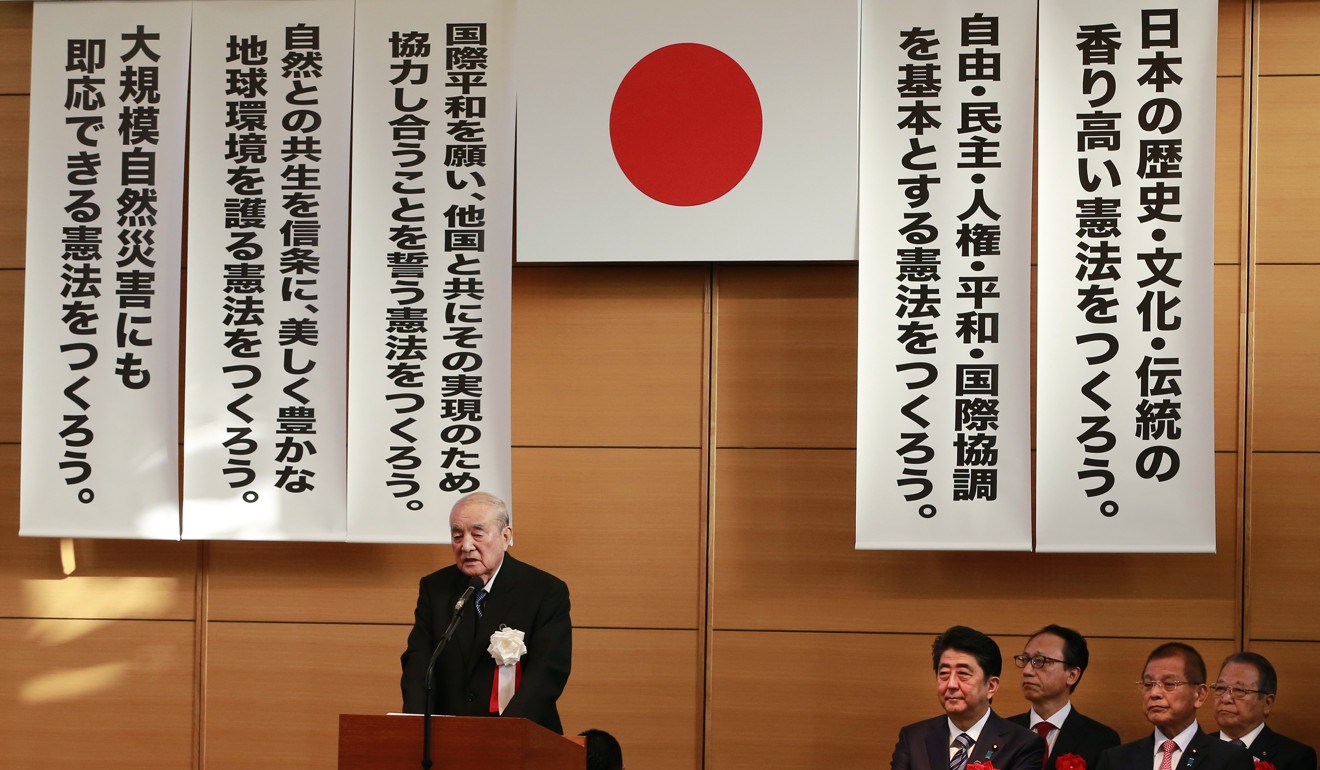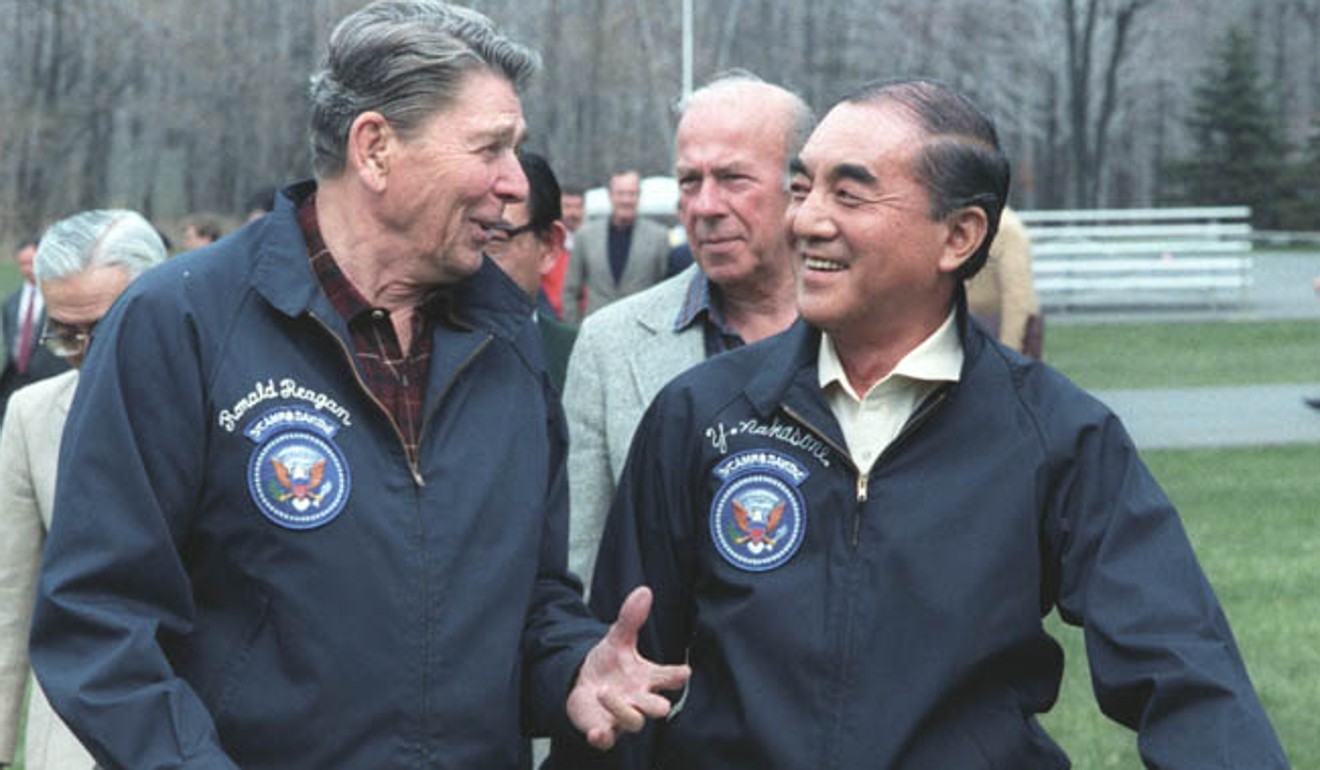
Japan ex-PM Yasuhiro Nakasone turns 100, calls for change to post-war pacifist constitution in birthday message
Yasuhiro Nakasone has long advocated amending the US-drafted charter to clarify the ambiguous status of the military – a goal shared by incumbent premier Shinzo Abe
It is somehow fitting in a country known for longevity that one of Japan’s most prominent former leaders has reached 100 years of age.
As a second world war naval officer, Yasuhiro Nakasone witnessed the depths of his country’s utter defeat and devastation.
Four decades later he presided over Japan in the 1980s at the pinnacle of its economic success. In recent years, he has lobbied for revision of the war-renouncing, US-drafted constitution, a long-time cause that neither he nor any successor has achieved to date.
He urged politicians to seriously tackle the matter, which remains a contentious topic among the Japanese public.
“To resolutely open the path to the nation’s future … is the essence of politics,” Nakasone said in a statement issued to mark his birthday that was carried by Japanese media.
Nakasone, who is cared for by his 71-year-old daughter at their Tokyo home, is slowing down but in fine health, his aide Masaki Donji said.

He skipped his annual speech at a May rally in support of constitutional revision, because he had broken his right hand and couldn’t use his cane to get up from his wheelchair.
Still, he checks newspapers every morning and reads books, and sometimes drops by his office, escorted by his family.
“Endless hunger for exploration and intellectual curiosity is crucial,” Nakasone said
The son of a timber merchant, Nakasone was born May 27, 1918, the last year of the first world war. He went to Tokyo Imperial University before entering the navy, where he rose to lieutenant commander during the second world war.
He began his political career as a fiery nationalist denouncing the US occupation, which lasted from 1945 to 1952.
He was a driving force in the 1950s behind building nuclear reactors in resource-poor Japan, a move that helped propel the nation’s post-war economic growth and recovery.
During more than a half-century in parliament, he served as defence chief and head of the powerful Ministry of International Trade and Industry.
As prime minister from 1982 to 1987, he strengthened Japan’s defence and alliance with the US while tackling vested interests to launch the privatisation of the state telephone, tobacco and railway companies.

Known for his “Ron and Yasu” friendship with former US president Ronald Reagan, Nakasone made headlines after taking office when he said that, in the event of a war, he would make Japan an unsinkable “aircraft carrier” for US forces and bottle up the Soviet navy.
His nationalist legacy includes the first official visit by a post-war prime minister to Yasukuni Shrine, which honours Japan’s war dead, among them convicted war criminals.
His visit fuelled disputes with China and South Korea over second war history that persist to this day.
Both nationalist and wrestling with the same issues – stronger military, constitutional revision and even trade friction with the US – Prime Minister Shinzo Abe has been compared to Nakasone by some Japanese media and analysts.
But Japan that Abe leads today is no longer at its peak and China is now a rival to the US, prompting Abe to be more hawkish toward Beijing’s aspirations.
“The important difference between these two leaders is that Nakasone experienced the war, the real battlegrounds and saw his buddies killed. This brought some intrinsic humbleness to Nakasone, though he often looks haughty,” said Hiro Aida, an international politics professor at Aoyama Gakuin University in Tokyo.
Nakasone is not the first ex-Japanese leader to reach 100; Prince Naruhiko Higashikuni, the prime minister for 54 days immediately after the second world war, lived to be 102.
Japan is home to more than 67,000 centenarians, including the world’s oldest person, a 117-year-old woman.
Nakasone says he is not done yet.
“I am determined to devote myself to my last service for the country, for the people and for my hometown,” he said.
Nakasone was forced to retire in 2003 when he was 85, along with other elder statesmen, by then-premier Junichiro Koizumi, who was keen to rejuvenate the Liberal Democratic Party’s image as a party of staid, elderly politicians.
Associated Press, Reuters
